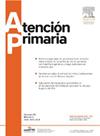COVID-19 对厄瓜多尔血脂异常患病率的影响:2017年至2022年横断面研究。
IF 1.8
4区 医学
Q2 MEDICINE, GENERAL & INTERNAL
引用次数: 0
摘要
目的:确定厄瓜多尔三个地区在 COVID-19 前和 COVID-19 期间血脂异常发生率的变化:确定厄瓜多尔三个地区在 COVID-19 之前和 COVID-19 期间血脂异常患病率的变化情况:设计:横断面研究。研究地点基多、瓜亚基尔和埃尔科卡:2017年1月至2022年12月在初级保健中心检测胆固醇、高密度脂蛋白、低密度脂蛋白和甘油三酯水平的成年人:不适用:数据来自五个BIODIMED初级保健中心。根据 ATP III 指南对胆固醇、高密度脂蛋白、低密度脂蛋白和甘油三酯水平进行分类。当一个或多个参数超过特定阈值时,即认为存在血脂异常。社会人口学变量和检查年份被列为自变量:研究分析了 110 521 名参与者的化验结果,其中 65.3% 为男性,平均年龄为 38±12 岁。研究范围包括安第斯地区(72.4%)、沿海地区(15.4%)和亚马逊地区(12.3%)。大流行前体检者占样本的 60.9%。血脂异常患病率从2017年的43.1%逐渐上升到2022年的64.1%。胆固醇水平、高密度脂蛋白和低密度脂蛋白在大流行期间发生了变化,高胆固醇血症、低高密度脂蛋白和高低密度脂蛋白的风险增加:结论:在 COVID-19 大流行期间,厄瓜多尔三个地区的血脂异常(包括高胆固醇血症、高甘油三酯和高低密度脂蛋白)患病率明显增加。本文章由计算机程序翻译,如有差异,请以英文原文为准。
Impact of COVID-19 on the prevalence of dyslipidemia in Ecuador: A cross-sectional study between 2017 and 2022
Objective
To determine changes in the prevalence of dyslipidemias during the pre-COVID-19 and COVID-19 years in three regions of Ecuador.
Design
Cross-sectional study.
Site
Quito, Guayaquil, and El Coca.
Participants
Adults with cholesterol, HDL, LDL, and triglyceride levels at primary care centers from January 2017 to December 2022.
Interventions
Not applicable.
Main measurements
Data were obtained from five BIODIMED primary care centers. Cholesterol, HDL, LDL, and triglyceride levels were classified according to the ATP III guidelines. Dyslipidemia was considered present when one or more parameters exceeded specific thresholds. Sociodemographic variables and the year of examination were included as independent variables.
Results
The study analyzed 110,521 participants’ laboratory results, where 65.3% were males and an average age of 38 ± 12 years. The study spanned the Andean (72.4%), Coast (15.4%), and Amazonic region (12.3%). Pre-pandemic exams constituted 60.9% of the sample. The prevalence of dyslipidemia increased gradually from 43.1% in 2017 to 64.1% in 2022. Cholesterol levels, HDL, and LDL exhibited changes during the pandemic, with an increased risk of hypercholesterolemia, low HDL, and high LDL.
Conclusions
During the COVID-19 pandemic, a notable increase in the prevalence of dyslipidemias, including hypercholesterolemia, high triglycerides, and high LDL, was determined across three regions in Ecuador.
求助全文
通过发布文献求助,成功后即可免费获取论文全文。
去求助
来源期刊

Atencion Primaria
医学-医学:内科
CiteScore
2.90
自引率
8.00%
发文量
156
审稿时长
33 days
期刊介绍:
Atención Primaria es una revista que publica trabajos de investigación relativos al ámbito de la atención primaria de salud. Desde el punto de vista conceptual, Atención Primaria asume el nuevo modelo de atención primaria de salud, orientado no sólo a la curación de la enfermedad, sino también a su prevención y a la promoción de la salud, tanto en el plano individual como en el de la familia y la comunidad. En estos nuevos aspectos que definen el modelo de atención primaria de salud es en los que se centran los trabajos de investigación que publica Atención Primaria, la primera revista de originales española creada para recoger y difundir la producción científica realizada desde los centros de atención primaria de salud sobre cuestiones como protocolización de la asistencia, programas de prevención, seguimiento y control de pacientes crónicos, organización y gestión de la asistencia primaria, entre otros.
 求助内容:
求助内容: 应助结果提醒方式:
应助结果提醒方式:


